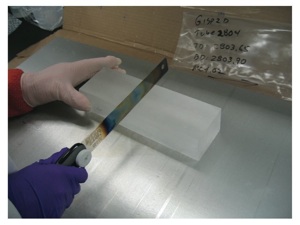longevity of BACTERIA IN GLACIAL ICES
AND PERMAFROST

"How long can life be stored and remain viable?" While several articles report isolation of cultivable bacteria from 25-250 million year old amber and halite crystals, these results are called into question because of uncertainties in sample contamination. Since bacterial spores are the most durable form of life, a measurement of bacterial spore viability addresses this question directly. We have been working on developing and validating an Endospore Viability Assay (EVA). This assay allows quantification of the viable fraction of bacterial spores in bulk solution through use of the Tb3+-DPA luminescence assay. The EVA has been validated with respect to standard microbiological assays and tested in determining UV sterilization efficiency. Currently the EVA is being applied to environmental samples like ice cores and permafrost from Arctic/Antarctic regions that were obtained at various depths, which can be correlated to time. The resulting plot of percent viable spores remaining versus time will yield the bacterial spore viability lifetime.
the Tb3+-DPA luminescence assay. The EVA has been validated with respect to standard microbiological assays and tested in determining UV sterilization efficiency. Currently the EVA is being applied to environmental samples like ice cores and permafrost from Arctic/Antarctic regions that were obtained at various depths, which can be correlated to time. The resulting plot of percent viable spores remaining versus time will yield the bacterial spore viability lifetime.

publications
Quantification of viable endospores from a Greenland ice core. Yung, P.T.; Shafaat, H.S.; Connon, S.A.; Ponce, A. FEMS Microbiology Ecology, 2007, 59, 300-306. [PDF]
Applications of a rapid endospore viability assay for monitoring UV inactivation and characterizing Arctic ice cores. Shafaat, H.S.; Ponce, A. Applied and Environmental Microbiology, 2006, 72(10), 6808-6814. [PDF]

